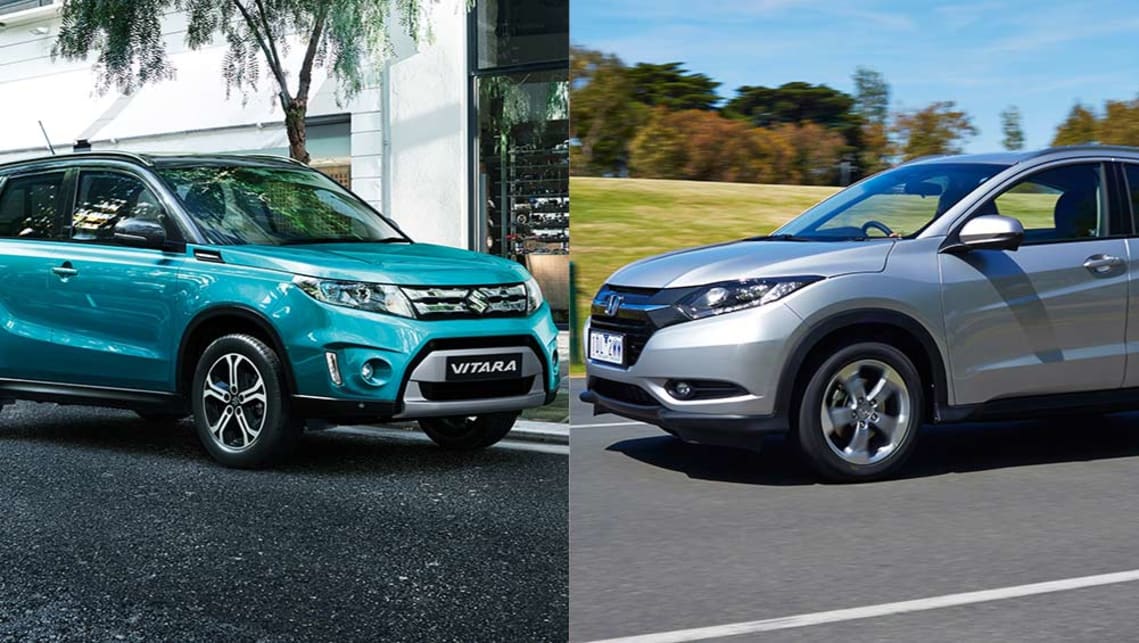
Skoda Fabia vs Mazda 2
It's a baby hatch match, playing sportiness against cuteness. Then, says Craig...
Browse over 9,000 car reviews

In the battle of the baby SUVs, space and price are paramount. Craig Duff splits this pair of newcomers.
value
Suzuki Vitara RT-X
$31,990
A massive sunroof, a smart-looking multimedia interface and modern looks are the highlights. Hard, if glossy plastics and a price that pitches the top-spec version against the best of breed in the compact SUV class are the downsides. The three-year/100,000km warranty requires services every six months/10,000km and the capped price for the first three years runs to $1540.
Honda HR-V VTi-S
$27,990
In mid-spec VTi-S guise the baby Honda hauler picks up niceties such as climate control aircon, leather-wrapped steering wheel and gearknob. Hard plastics are also a feature but they are generally better hidden than in the Suzuki. A three-year/100,000km warranty is nothing special. Service intervals are 12 months/10,000km and the cost for the first three years is $880.
design
Suzuki Vitara RT-X
A deep and solid front end gives the Vitara more road presence that its size would suggest. A colour-coded panel bisects the dash. The seven-inch touchscreen is hi-res and easy to drive. Boot space is good at 375 litres... but the Honda holds another 50L.
Honda HR-V VTi-S
The foldable, flippable rear seat design is inspired and lets owners carry objects that would be beyond most mini SUVs. Rear headroom is marginally better than in the Suzuki. The exterior look is more car-like than the Vitara, accentuated by the Honda’s 150mm lower ride height.
technology
Suzuki Vitara RT-X
Engine
The powerplant is the chink in the Suzuki’s lightweight armour. The Vitara is 200kg lighter than the Honda but the power deficit means it trails the HR-V in real-world driving — and the Honda is far from being best in class. The six-speed auto is happy to change up early to save petrol but can hesitate dropping down the cogs. Officially fuel use is 6.3L/100km; CarsGuide saw 7.0L.
Honda HR-V VTi-S
Engine
A naturally aspirated 1.8-litre engine gives Honda bragging rights on paper and on the road. With 105kW/172Nm, the HR-V has a 19kW/16Nm advantage. But it only feels marginally quicker and doesn’t sound as good when revved. The continuously variable transmission is generally quiet but can drone at times. Official fuel use is 6.6L/100km; CarsGuide posted 7.8L.
safety
Suzuki Vitara RT-X
ANCAP has yet to crash the Vitara but a strong result in the EuroNCAP crash tests and seven airbags should see it achieve a decent score here. The absence of safety features such as lane departure warning or autonomous emergency braking may count against it ticking the five-star box.
Honda HR-V VTi-S
City braking and lane departure warning are standard inclusions on the VTi-S and they’ll both prove invaluable in urban driving. ANCAP has yet to rate the car but the Jazz on which it is based earned five stars when tested last year.
driving
Suzuki Vitara RT-X
All-wheel-drive grip gives the Vitara an edge on slippery slopes. The engine is happy to spin and the engineering quality can be felt every time you ask the SUV to change direction. The suspension soaks up small bumps better than the Honda without pitching like a drunk through the turns and the steering is about ideal for this class of car.
Honda HR-V VTi-S
The Honda is an all-rounder whose capability extends beyond the steering wheel. That's a good thing, given it can't match the Vitara through the turns. The suspension is hard over small bumps but then wallows in the big ones. Where it excels is in carrying loads — human or cargo — in the inner city and at this price it represents better value than the Suzuki.
Verdict
Suzuki Vitara RT-X
Honda HR-V VTi-S
The Vitara knows how to stay in shape on the road; the HR-V can accommodate almost any shape you throw at it and wins on the basis of that practicality.
Comments